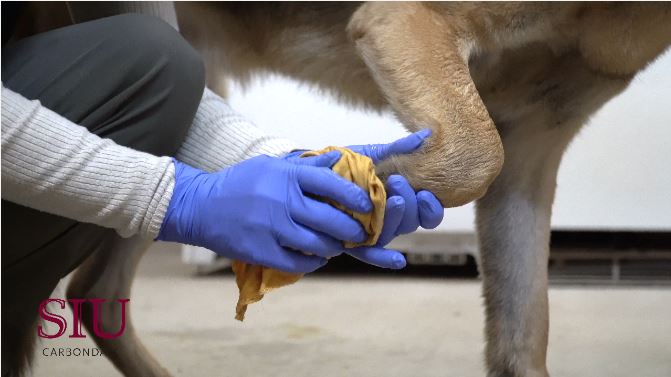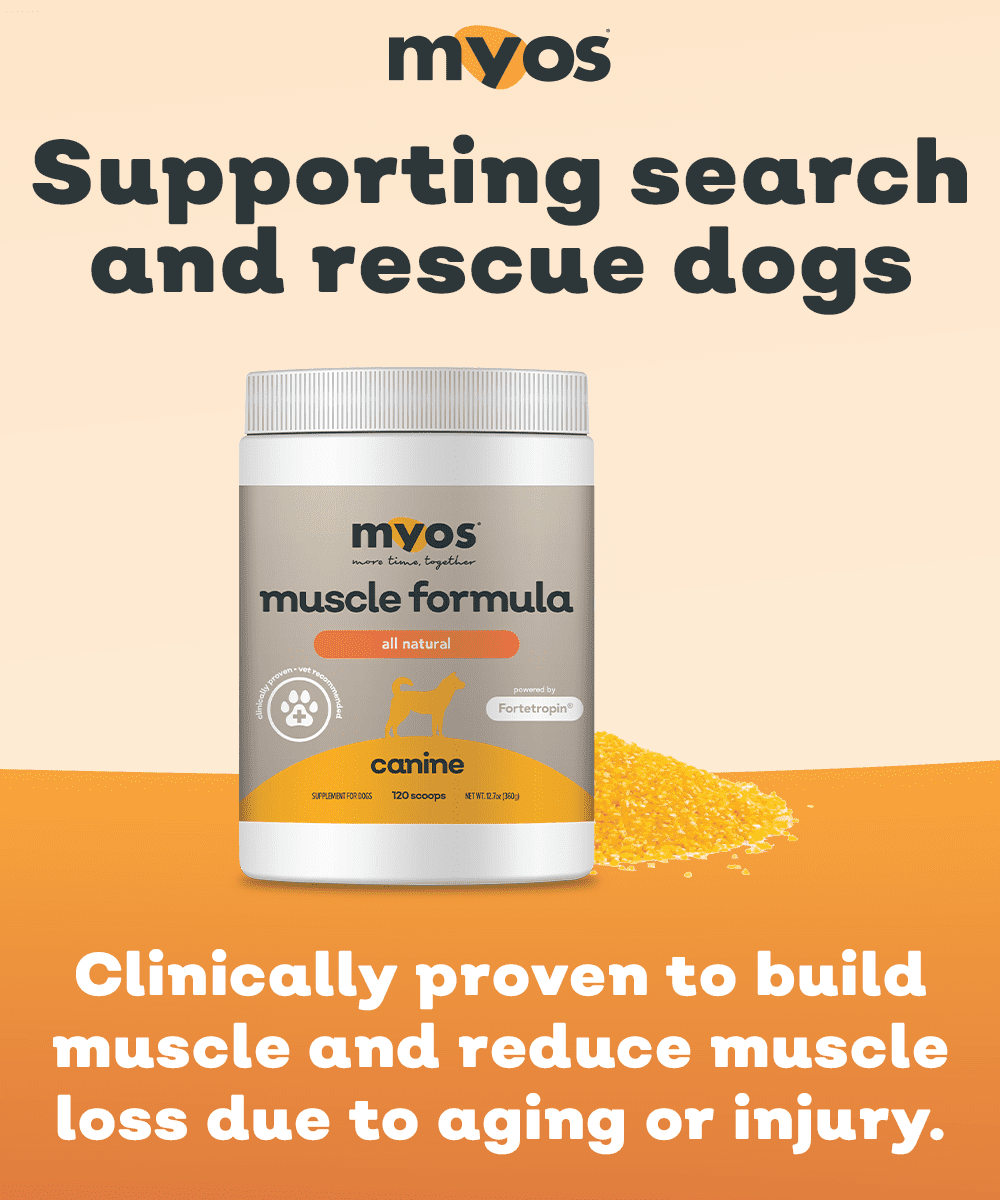K9 Decon: Your Partner’s Health And Safety Are On The Line

Are You Prepared?
Canine decontamination is a scary topic. For many handlers this thought has never crossed their mind. However, our canine partners are frequently exposed to dangerous environments while on a mission and it is our responsibility to mitigate the risk of exposure in order to ensure their safety and continued good health.
It is an unfortunate fact that disasters occur. When they do, our dogs are frequently tasked with working in dirty or dangerous environments. If you have not considered the decontamination element of your canine’s work cycle, I highly encourage you to think it through.
[Even if K9 decontamination is a topic you and your team address, we recommend reading a paper published by Dr. Perry's lab An evaluation of current working canine decontamination procedures and methods for improvement.]
Potential Hazards
After almost losing my canine partner to chemical exposure after a tornado deployment, I began to look for better ways to more thoroughly mitigate this risk. Although it is unlikely that you will know the exact nature of all hazards within the operational environment, likely hazards may include:
Liquids – standing liquids may contain petroleum-based compounds, benzene derivatives, and other potentially dangerous toxicants. Additionally, the risk for microbiological contamination is very high as human waste is frequently identified in samples collected after disaster strikes. If your canine is working in areas where standing liquid may be a hazard, a full decontamination bath is ideal. Assess the most likely areas for exposure (lower legs, paws, abdomen, chest) and be sure to focus efforts in areas of greatest risk.
Solids – Canines may be asked to work in areas that are very muddy or that contain high levels of exposure to human remains such as the 2014 Oso Mudslide. Removing sludge, human sewage, and other medically biohazardous materials from the dog should ideally include a full decontamination bath. Assess the most likely areas for exposure (lower legs, paws, abdomen, chest) and be sure to focus efforts in areas of greatest risk.
Particulates – Some environments may include asbestos or other fine particulates that are disturbed via machinery, air currents, movement of rubble or other activity. Particulates in the air may not necessarily make contact with the canine’s skin and so may not require a full decontamination bath. If no dermal contact is made, a wipe-down procedure may be sufficient for appropriate decontamination efforts. Join us for the free training at the end of this blog to learn how!
Aerosolized particles – Canines working in areas of microbiological contamination should consider aerosolized particles as a potential threat. Research is currently ongoing into the potential for the dog’s coat to act as a fomite for bacterial, viral or fungal contamination. Until more conclusive evidence is produced, it is prudent to consider a wipe-down procedure as a mitigation step at the conclusion of each work cycle.
Key Components Of Decon Process
The work that we do necessarily involves accepting the dangerous conditions under which we deploy. Mitigation of environmental contamination risks is reasonable and should be incorporated into each handler’s regimen at the conclusion of each work cycle.
Please remember the following basics:
- PPE is critical. Protect yourself prior to decontamination efforts by utilizing proper PPE.
- Avoid a full decontamination bath unless necessary based on exposure. Unnecessary bathing can be damaging to the canine skin and also increases the risk of cross-contamination.
- Decontamination of the dog MUST INCLUDE EQUIPMENT. Leather leashes/collar sets can be wiped down but nylon items should be laundered in order to achieve maximum reduction.
- Reward items that are porous in nature (tugs, tennis balls, etc.) should be discarded once they have been contaminated by environmental materials. Research conducted by my lab has demonstrated that 100% of reward items utilized in a contaminated environment also become contaminated.
*When utilizing a full decontamination bath please utilize low-pressure water, ensure that collection for the gray water is adequate, and utilize full PPE.
Team Member Safety
As the safety of our team members should always be a priority, please remember that decontamination supplies and procedures should be widely available. Training for canine decontamination has been demonstrated to improve reduction of contamination when compared to untrained handlers. If your organization is interested in learning more about decontamination specific for canines please contact erin.perry@siu.edu for more information.
Don't Forget...
- If dog has a confirmed exposure to dangerous material (chemical or biological)
- Decontamination is time sensitive. Gross reduction in the field can be life-saving later. Utilize field-expedient decontamination efforts and seek veterinary care immediately.
- Remember to utilize a basket muzzle to avoid ingestion exposure via self-grooming.
- Remember to decontaminate any crate/kennel/contact areas where the contaminant may have been transferred as a result of transportation.
- Avoid contact with mucus membranes if possible.
- If possible avoid contact with eyes, ears, and mouth of the dog.
- If contamination has already occurred, ocular or nasal flush should be utilized with sterile saline or other appropriate flush solution.
- Properly contain all items related to decontamination after contact with the dog.
- Medical biohazard bags can be used to safely collect gloves or other disposable items related to canine decon. Arrangements for disposal should be made through your sponsoring agency.
Are Your K9 Decon Protocols Keeping Your Dog Safe?
Get the latest scientifically-validated decon protocols, including video demonstrations, downloadable protocol PDFs, and the exact supplies you need.
 Dr. Erin Perry is an Associate professor at Southern Illinois University with more than 15 years of experience with working canines. Her research focuses on bringing practical solutions to the challenges encountered by working canines on deployment including gastrointestinal upset as a result of stress and improvements to current decontamination methods. Dr. Perry works with the Federal Emergency Management Agency as a Canine Handler, Evaluator and Instructor. Her published work includes investigations into the impacts of travel stress on working canines, a comprehensive review on canine olfaction, and studies examining the mechanics of canine decontamination. She has deployed with her canine partners to numerous disasters including Hurricane Katrina, Hurricane Sandy, Joplin Tornado, Colorado Flooding, Hurricane Matthew and Hurricane Harvey, and Hurricane Florence.
Dr. Erin Perry is an Associate professor at Southern Illinois University with more than 15 years of experience with working canines. Her research focuses on bringing practical solutions to the challenges encountered by working canines on deployment including gastrointestinal upset as a result of stress and improvements to current decontamination methods. Dr. Perry works with the Federal Emergency Management Agency as a Canine Handler, Evaluator and Instructor. Her published work includes investigations into the impacts of travel stress on working canines, a comprehensive review on canine olfaction, and studies examining the mechanics of canine decontamination. She has deployed with her canine partners to numerous disasters including Hurricane Katrina, Hurricane Sandy, Joplin Tornado, Colorado Flooding, Hurricane Matthew and Hurricane Harvey, and Hurricane Florence.

